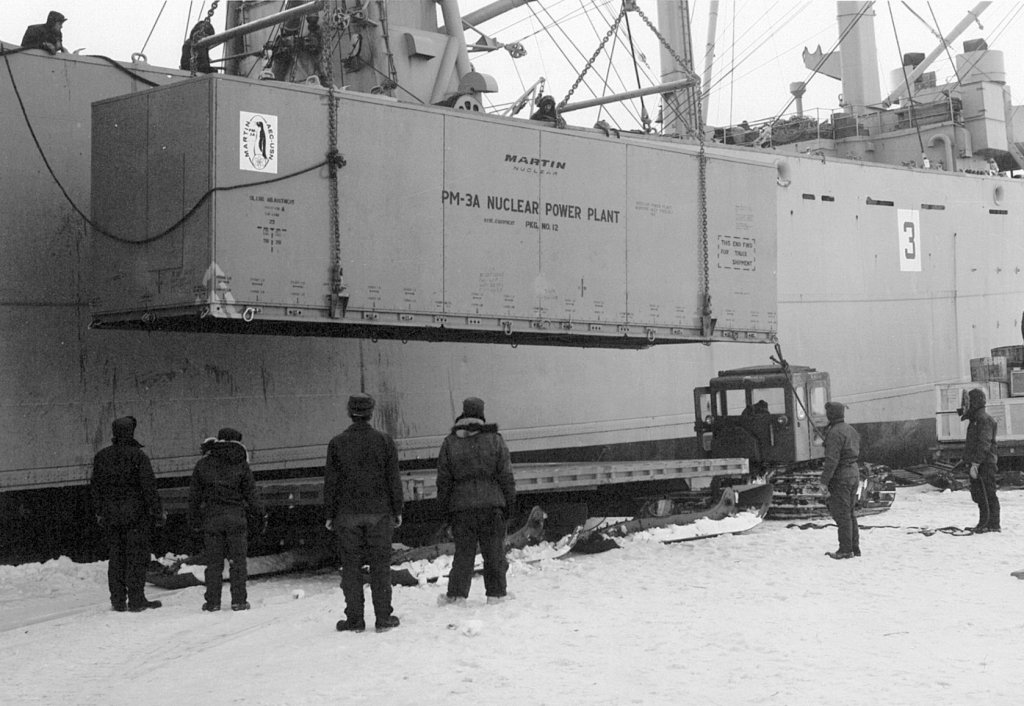

U.S. Naval Construction Battalions, better known as Seabees, are famous for their building projects in some of the most austere conditions. Their mottos “We build, We fight” and “Can Do” are perhaps best exemplified in the construction of the first and only nuclear power plant on Antarctica.

Operation Deep Freeze, a series of U.S. missions to Antarctica, started in 1955. Military support to the operation is vital, especially in sustaining the human presence at the bottom of the world with supplies and livable conditions. Crucially, missions in Antarctica need power. McMurdo Station, the largest Antarctic research base, requires immense amounts of fuel oil to maintain operations in the extreme conditions of the South Pole. Moreover, this fuel has to be transported to the continent and only during the summer months.

In August 1960, Congress approved the construction of a nuclear power plant at McMurdo Station. Martin Marietta was contracted to build the reactor named PM-3A. Designed to be portable and delivered by LC-130, the reactor’s fuel assembly was roughly the size of an oil drum. Although McMurdo Station is accessible by ship, it was hoped that nuclear plants could be expanded to facilities deeper in Antarctica that are only accessible by aircraft.

Through January and February 1962, Navy Seabees erected the PM-3A on Observation Hill overlooking McMurdo. On March 4, 1962, the power plant reached its first criticality. It was initially operated by Martin Marietta before operations and maintenance was handed over to Navy Officers, Seabees and Hospital Corpsmen of the Naval Nuclear Power Unit. Crews were also augmented with Army and Air Force personnel.

In addition to electricity, the PM-3A produced steam that powered a desalination plant which produced 14,000 gallons of fresh drinking water daily. Unfortunately, the nuclear plant was found to be about 72% reliable with 438 malfunctions in its lifetime. Moreover, newer diesel-electric generators would require less staff, be more reliable and pose no risk of nuclear radiation. The PM-3A suffered minor cracks in its containment vessel which leaked coolant water. All of these factors resulted in the plant’s shutdown in September 1972.

All reactor components, and even the soil beneath the buildings, were removed and shipped back to the U.S. for proper storage. The decommissioning process lasted until May 1979 when the site of the PM-3A reactor was declared safe and released for unrestricted use. Despite the radiation leak, the Department of Veterans Affairs notes that “estimated radiation doses for Veterans at McMurdo Station are low” and “risk of diseases from this exposure are also low.” Today, McMurdo is powered by diesel generators while a conventional desalination plant provides fresh water.
Feature Image: United States Antarctic Program
